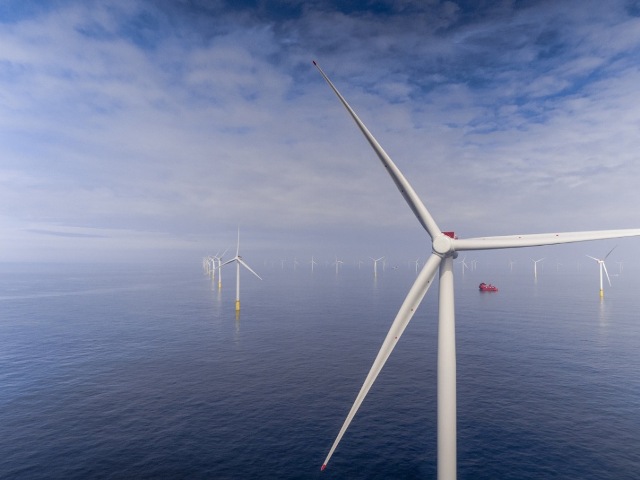In the fight against climate change, United States President Joe Biden’s ambitious objective of deploying 30,000 megawatts of offshore wind along U.S. coastlines by 2030 may face significant hurdles due to escalating costs and delays in the supply chain, Reuters news report said.
This 2030 target, a key component of Biden’s comprehensive plan to decarbonize the U.S. economy by 2050, holds vital importance for Northeast states seeking to transition from fossil fuel-fired electricity to wind power.
Kris Ohleth, Director of the Special Initiative on Offshore Wind, emphasized, “It doesn’t mean that there can’t still be excellent progress towards this technology that’s going to do great things for our nation,” indicating that achieving the initially envisioned scale by 2030 seems improbable.
In recent months, surging materials costs, high interest rates, and supply chain disruptions have led major project developers, including Orsted, Equinor, BP, Avangrid, and Shell, to either cancel or seek to renegotiate power contracts for the first commercial-scale U.S. wind farms with operating start dates set between 2025 and 2028.
Samantha Woodworth, a North American wind analyst at Wood Mackenzie, highlighted the industry’s recent challenges, projecting that the U.S. will likely achieve 21 GW of offshore wind by 2030, falling short of the 30 GW target but possibly achieving it by 2032.
The global offshore wind supply chain will require $27 billion of secured investment by 2026 if it is to meet a fivefold growth in annual installations (excluding China) by 2030, according to latest Horizons report by Wood Mackenzie.
Developers, once optimistic about reaching the 30 GW target, now express doubts. Michael Brown, U.S. Country Manager for Ocean Winds, stated, “Thirty gigawatts is now unfortunately not something that the developers are really aspiring to,” further indicating that while they aim for high gigawatt targets, the original 30 GW mark may not be attainable.
Recent setbacks, including project cancellations and impairments, have added to the industry’s challenges, raising questions about achieving the envisioned offshore wind capacity by 2030.
Despite these hurdles, the White House remains committed to offshore wind opportunities and the 30 GW goal. White House spokesperson Michael Kikukawa stated that the administration is utilizing all available legal tools to advance American offshore wind opportunities and achieve the 30 GW target by 2030. Notably, industry investments have increased by $7.7 billion since the Inflation Reduction Act was signed last year, containing tax credits for clean energy.
Installing 30 GW of offshore wind by 2030, adequate to power 10 million American homes, was an ambitious objective signaling the U.S.’s commitment to offshore wind. Currently, the nation has only two pilot-scale offshore wind farms capable of producing 42 megawatts of electricity.
The U.S. Department of Energy’s report in 2022 highlighted that achieving at least 30 GW of offshore wind by 2030 was not a guaranteed outcome. Recent forecasts from market research firms 4C Offshore and BloombergNEF further reduced the 2030 projections, underscoring the challenges in reaching the original target.
The Department of Energy maintains that the 2030 goal “is still within striking distance,” contingent on regulatory efficiency, availability of vessels and port infrastructure, grid planning, and new turbine technology. The administration is actively working on initiatives to address these crucial issues.
Northeastern states, including Massachusetts, New Jersey, and New York, heavily rely on wind power to meet their ambitious targets for renewable energy. New York aims to power its grid with 70 percent renewable energy by 2030, illustrating the critical role offshore wind plays in achieving these objectives.
Doreen Harris, President of the New York State Energy Research and Development Authority (NYSERDA), emphasized the influence of the U.S. northeastern states in setting these objectives, indicating their pivotal role in propelling the offshore wind industry forward.
While the 2030 target remains in question, stakeholders highlight the importance of ensuring the success of the initial fleet of projects, focusing on achieving milestones rather than rigid timelines. Stephanie McClellan, Executive Director of the offshore wind advocacy group Turn Forward, stressed the significance of this approach in ensuring the long-term sustainability and growth of the offshore wind industry.

